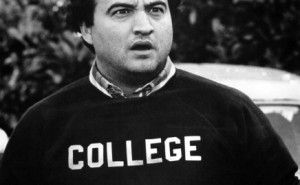Growing CA’s education welfare system
May 25, 2012
By Katy Grimes
SACRAMENTO — Democratic Assembly Speaker John Perez, D-Los Angeles, has been pushing unusually hard to get a tax bill passed, but it’s not looking good. There is no getting around the fact that AB 1500, a bill he’s sponsoring, would impose a $1 billion tax increase on businesses which are not headquartered in California, but have significant business operations in the state.
Even in California, some lawmakers recognize that this is just one more attempt to tax businesses for California’s growing education welfare system. And it is important to remember that, because AB 1500 is a $1 billion tax increase, it requires a two-thirds vote of the Legislature, which perhaps explains why Perez is working so hard to get it passed.
But even more insidious than this attempt to increase taxes, this bill is just another banal repackaging of similar bills that have failed to pass the smell test with voters, and even legislators. However, this version is worse because it contains none of the tax credits or other incentives from the 2011 bills, the last attempt to repeal a business tax credit.
There is another hearing on AB 1500 Friday which will undoubtedly prove to be as big a dog-and-pony show as the previous hearings. Perez has trotted out the same college students through each of the hearings to share their stories of hardship and financial woes. Mixed in with the students are union representatives, union employees and well-schooled, well-trained college activists.
But whining to a legislative committee of people who likely worked while going to college doesn’t twang the sympathy strings as much as Perez thought it might.
Middle Class Scholarship
AB 1500 would raise taxes on businesses and employers who operate inside California, but are headquartered out-of-state. Unlike the previous versions of the legislation, this latest bill remodeling now claims that the proceeds will go to creating a “Middle-Class Scholarship” for California’s public college students.
Perez calls the existing tax credit a “loophole.”
“AB 1500 restores the level playing field for California businesses,” Perez has said at each of the hearings on AB 1500.
The Loophole
In 2009, state law was agreed to and changed by both Democrats and Republicans to allow the use of the single sales apportionment factor to be used by businesses. The corporate tax break, imperative for stimulating business in the state, allows businesses to choose whether to have their income tax based on the proportion of their total sales within California — or on a combination of their total sales and operations, which includes payrolls as well as property.
Perez conveniently branded it a “loophole.”
AB 1500 is a very large tax increase on manufacturers, retailers and other businesses that create jobs for California workers. The bill is another $1 billion tax increase on companies that create jobs, pay taxes on their property, sales and payroll receipts, and have employees in California. Many fear that it will only lead to more uncertainty and unpredictability within businesses, and discourage companies from growing, or investing in California.
“Current law allows companies two ways to pay their fair share of taxes. AB 1500 removes one of those options,” the Legislative Analyst’s Office reported. But Perez has a different take on this tax law: “This elective method right now creates a ‘perverse disincentive’ to invest in new plants and jobs in the state. It actually creates an incentive to move payroll and property out of state.”
The leveling of the loophole
Perez claims AB 1500 will only target big corporations. But State Franchise Tax Board records showed that Proposition 24, the 2010 ballot initiative that was another rendition of this tax increase, would have impacted 120,000 businesses, large and small.
Chief Executive magazine recently ranked California the worst state to do business for the eighth year in a row, citing such factors as energy, labor costs, land costs, regulatory burdens, transportation congestion and taxes. Disincentives for California employers to invest and hire are innumerable and astonishing; a $1.2 billion tax increase is a “perverse disincentive.”
But Perez doesn’t see it this way. At a recent hearing, Perez said, “If an out-of-state firm wants to move operations into California, they will be discouraged because, under the double-weighted sales apportionment rule, every dollar they invest in jobs or infrastructure in California will result in a higher California tax bill.”
AB 1500 tips the playing field by picking winners and losers among certain companies already heavily invested in California. And AB 1500 inflicts another $1.2 billion tax increase so that the losers lose even more.
Perez said that if AB 1500 is passed, tuition costs for California’s public universities would decrease by two thirds, and California’s Community College system would receive a $150 million infusion of funds. . “AB 1500 restores opportunity for middle class families,” said Perez.
However, the bill is light on details about this scholarship fund.
Tax business = fewer jobs
The California Manufacturers and Technology Association opposes AB 1500 and calls the funding scheme “an unjustified $1 billion tax increase on companies that create jobs, pay taxes on their property, sales and payroll receipts, and have employees in California.”
The irony of this bill is that it will likely lead to fewer middle-class jobs for those middle-class students when they graduate. A $1.2 billion tax increase on California employers already struggling to compete against businesses in other states, will have fewer employment opportunities for the middle class.
“AB 1500 continues the effort . . . in a revenue neutral manner by using revenues generated . . . to cut college fees,” Perez explained at a recent hearing. However, California employers don’t pay college tuition. The bill imposes a huge tax increase on employers and then uses that revenue somewhere else. This is the definition of a tax increase, not revenue neutrality.
“Single-sales factor is a methodology of assessing what is a previously existing corporate tax,” said Gov. Jerry Brown. “It’s not a new tax. It’s a way of calculating the tax….And so I think changing this, which is an obvious loophole — a dumb idea to begin with — I think it equitable, it’s logical, and I would say, in every sense of the word, it’s a changing of how corporations calculate their tax in a way that brings things into line. I think it’s certainly consistent with what I believe and what I promised in my campaign.”
“We as individuals can’t choose between two methods of how to calculate our tax,” Brown added. “We only got one method.”
That a taxpayer’s liability should be somewhat tied to their presence and corresponding demand for government services is not an unusual concept. The more than 40-year history of payroll-property-sales methods, recognize this and measure business economic presence accordingly.
The Middle Class Scholarship Fund cannot ensure job creation and investment in California as its supporters claim. A California-based company could decide after AB 1500 is enacted to pocket their Single Sales Factor tax cut and move every employee and piece of equipment to Arizona, New Mexico or Texas, and join the growing club of out-of-state companies that fled California.
Related Articles
Lawsuit argues CA education spending is constitutionally insufficient
When it comes to lawsuits arguing that California’s education system is unfair and unconstitutional, the Vergara v. California case has
California declares land war on families
April 18, 2012 By Wayne Lusvardi Everyone knows that California has water wars. But it also has land wars. And
CA state and local spending rises to nearly $400 billion a year
California’s state and local spending, in total, has risen to nearly $400 billion a year. That is, if anyone can




